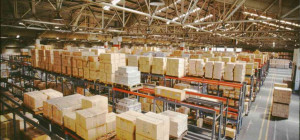 While your business undoubtedly has sustainability on its supply chain program, creating momentum can be difficult in what is, after all, a new way to approach overall performance improvement. As companies focus more on environmental protection perspectives and customers rapidly consider sustainability in their purchasing decision, every supply chain business must find a way forward.
While your business undoubtedly has sustainability on its supply chain program, creating momentum can be difficult in what is, after all, a new way to approach overall performance improvement. As companies focus more on environmental protection perspectives and customers rapidly consider sustainability in their purchasing decision, every supply chain business must find a way forward.
The good news is that sales and operations planning software has multiple benefits attached to developing a sustainable supply chain. Since sustainability often involves consuming less and achieving more efficiency, S&OP improvements can often lead to cost savings and more streamlined operations.
But how to get started on sustainable supply chain development? The answer, as with various change efforts, is to be more systematic and take small initiatives toward leading in the right direction.
Every supply chain is different, so it’s hard to find precisely how sustainability should be tackled. Organizations can now systematically approach milestones in both areas instead of focusing on profit margins and sustainability as distinct goals. A data-driven S&OP solution is one of the best ways companies can minimize their carbon footprints and increase their profits.
1. Lower Excessive Waste in the Supply Chain
By modeling and following data-driven inventory stock levels, businesses can ensure their customer orders can be easily fulfilled according to their current production and projected sales, helping to decrease excessive production costs and avoid shortages. With the help of S&OP software, companies can fuse supply and demand using their historical data and use advanced data analytics to support intelligent management. More innovative operations mean smarter manufacturing and a sizable reduction of waste in the supply chain.
2. Increase Local Material Sourcing
With sales and operations planning software, your business can now analyze how locally sourcing your product will impact profit margin and carbon footprints. A locally sourced product can lessen shipping costs, reduce emissions, and meet customer demand in a short time for a more sustainable supply chain. On the other hand, the S&OP solution can also help companies evaluate how buying multiple products from the same supplier can support sustainability, even if the supplier is overseas.
3. Promote Sustainability-Centered Products
By connecting S&OP software to your business, you can quickly analyze sales trends related to sustainable products and create strategies to improve product promotions and marketing. For instance, a company from the automobile industry can use advanced data insights to gain information about the sale of electric or hybrid vehicles. With this in-depth detailing, the company can develop sales plans targeted to promote its future products. Increasing the sales of eco-friendly cars can, in turn, help the automotive business to reach its sustainability goals across the global market.
4. Minimize Inventory
Warehouses are responsible for various supply chain-related GHG emissions. They are large in size and consume most of the energy due to cooling/heating and lighting, and emit a specific amount of gases. With sales and operations planning, you can forecast demand more accurately to reduce inventory space and supply in accordance with demand and eliminate the need for a large warehouse.
5. Use Eco-Friendly Material for Product Packaging
The overall plastic recycling rate is low. They are not easily degradable and frequently penetrate the food chain cycle, posing a potential threat to the environment and human health. Despite their apparent drawbacks, companies often utilize them as packaging materials because they are cheap. Biodegradable packaging materials should be used by businesses focusing on a sustainable supply chain.
With the help of highly interconnected S&OP software, you can use accurate reporting and plan for your upcoming products. This way, you can strategize which product can use affordable and easily degradable packaging.
6. Use By-Products or Recycle Waste
Your inventory waste materials can be used as raw materials by another company. For example, materials for wrapping large shipments can be used as raw materials by other manufacturing businesses. Sales and operations planning can provide real-time data about how much excess waste is left behind in your inventory. By accurate reporting, you can make better decisions about how to utilize that waste as a by-product or a recyclable waste material.
7. Optimize Transportation Routes
S&OP solutions can support the company with environmental sustainability. Transportation operations contribute to the maximum amount of GHG emissions, which increases carbon footprints. Using sales and operations planning software, its accurate reporting can help you with slow-moving products and optimize better transportation routes.
Building a sustainable supply chain can ensure the longevity of your business. Companies should shift towards the mindset of what is the cost of developing a sustainable supply chain. Capturing the data to make a more interactive and efficient decision is vital. Organizations face difficulties observing what areas must be optimized and how this data is brought back into the business to create more efficient processing. Companies need to make more well-structured S&OP processes by figuring out where the bottlenecks exist and helping a business use its data to develop sustainable solutions.







